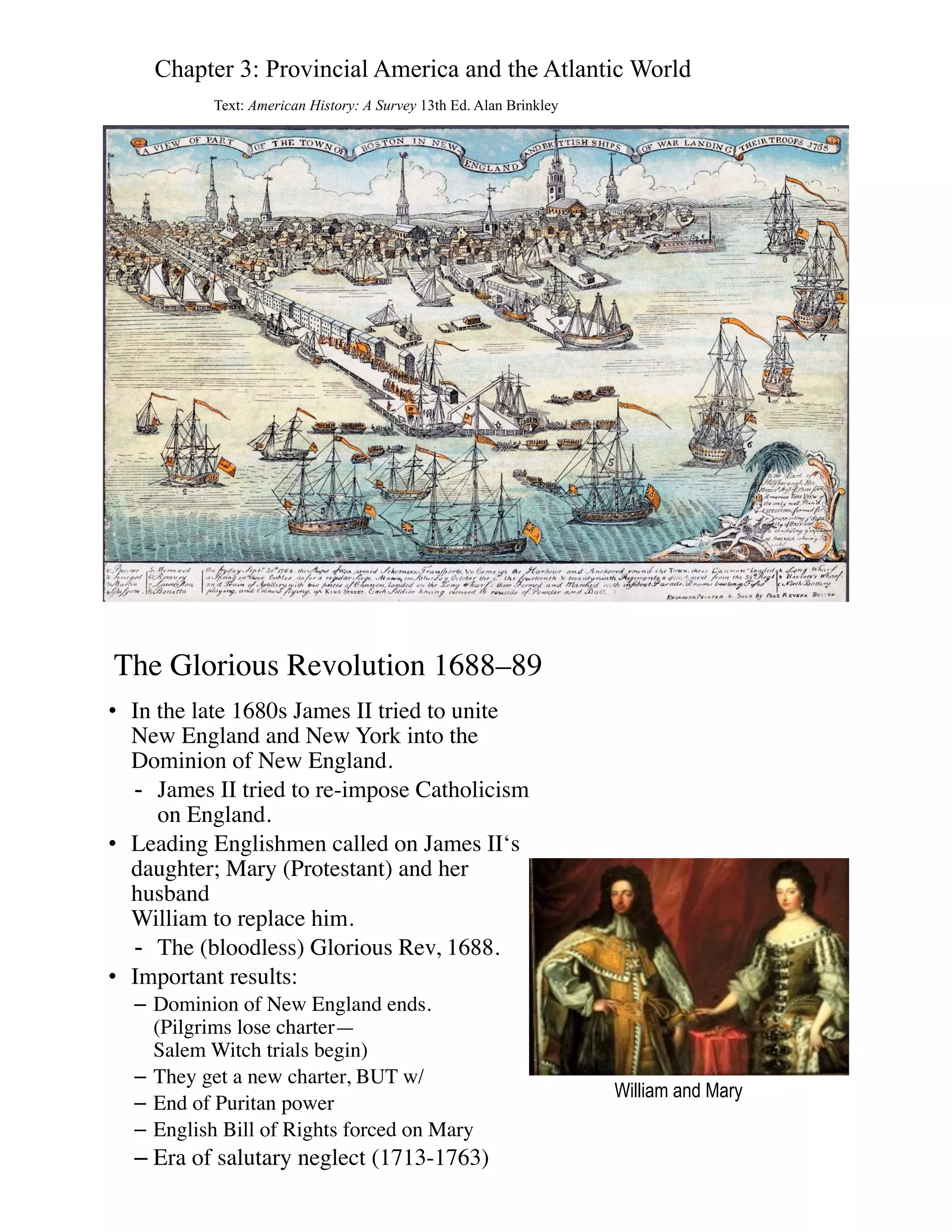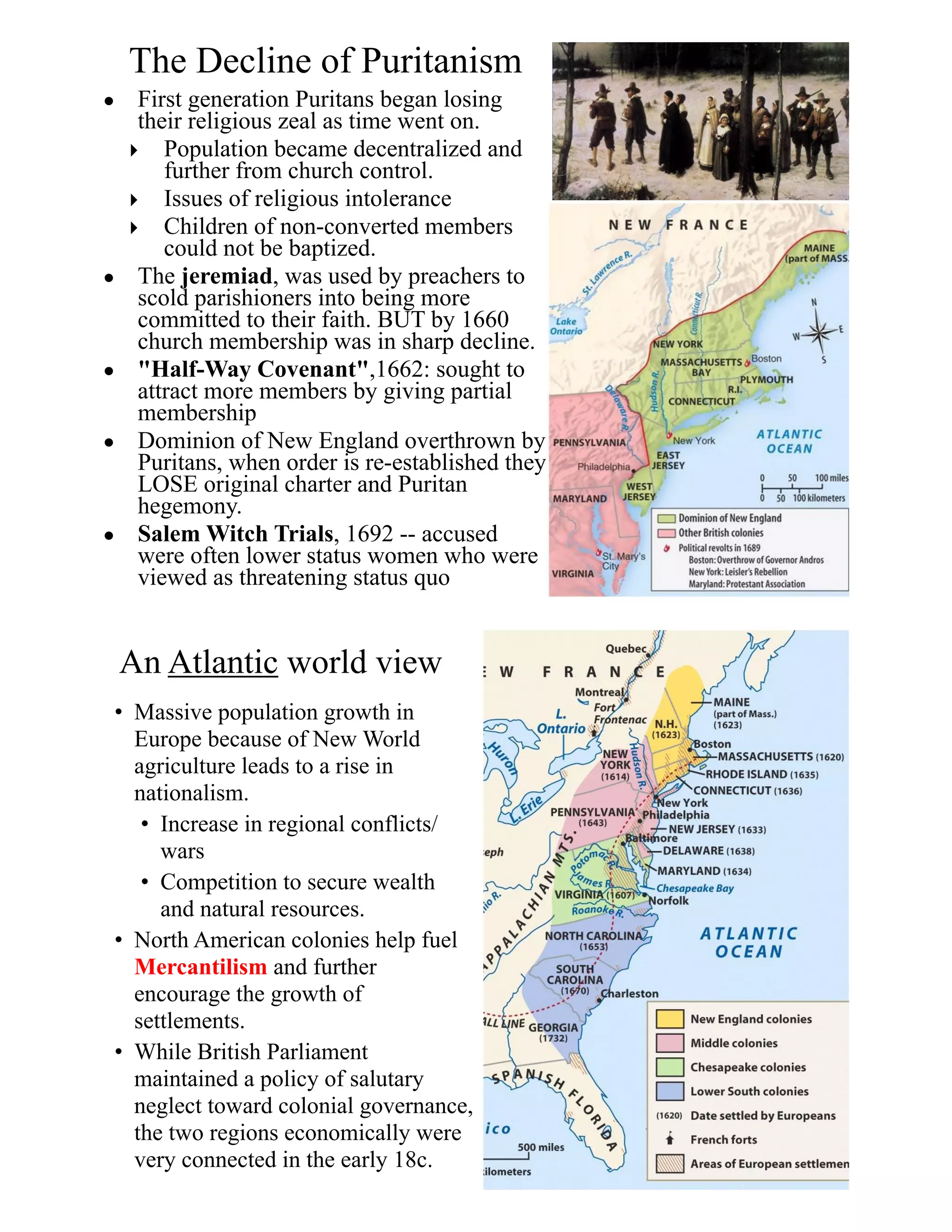The document summarizes key events and developments in the English colonies in North America from the late 1600s to the mid-1700s. It discusses the decline of Puritanism in New England, the growth of slavery and plantation economies in the South, and increasing tensions between the colonies and British authorities. It also covers the Great Awakening, the Enlightenment, and influential events like the Zenger trial that helped shape colonial ideas about freedom and rights.












